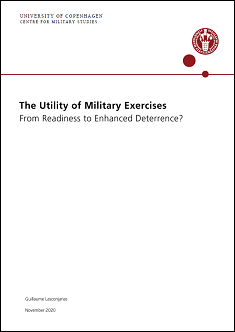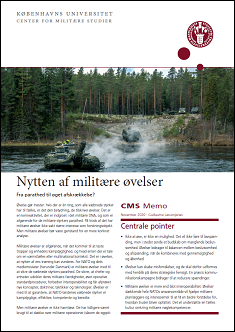The Utility of Military Exercises - From Readiness to Enhanced Deterrence?
Military exercises are often overlooked or merely considered a routine activity. Due to a very limited theoretical literature, as well as an inclination to focus on the “real thing”, i.e operations and campaigns, military exercises have been left aside. However, the new CMS Report “The Utility of Military Exercises - From Readiness to Enhanced Deterrence?” argues that they deserve a more concrete analysis of what they are, the purpose they serve, and the role they play.
Military Exercises 101: Understanding the Nature, Role, and Value of Military Exercises
In the past and especially during the Cold War, military exercises were used both to craft new concepts and to incorporate new capabilities that played a key role in deterring any given adversary; and in case deterrence would fail, to assure the readiness of our armed forces.
Because military exercises also send a political message, they are a double-edge sword and must be conceived, designed, and carried out with caution. Their strategic intent must be clearly set to avoid the risk of miscalculations or misinterpretations and, subsequently, escalation. Transparency and strategic communications are therefore a necessity to demonstrate openness and determination.
The Evolution of Military Exercises – from Cold War to Cold Peace?
An historical perspective is helpful when assessing the extent to which the nature of military exercises has evolved. The aim of focusing on how NATO and Russia engaged in exercises in the past and how the situation has dramatically changed in recent years is to see how far military exercises have accompanied or supported this evolution. Evidently, the geopolitical context plays an important role: The Cold War is over, but there are some similarities to be explored.
In Defense of Military Exercises? The NATO and EU Understanding of Exercises
Throughout its 70-year history, NATO has always had to focus on adapting to a changing security environment. However, the pace of events, their complexity, and their intricacies in recent years have called the consensus-based organization to leverage its political and military potential. On the contrary, the EU – by trade and construct of a very distinct organization – has favored other types of exercises and scenarios. Nevertheless, there seems to be some complementarity in how both organizations approach, use, and therefore value exercises.
Based on the analysis, the author Guillaume Lasconjarias puts forth a handful of recommendations to help decision-makers and exercise planners to identify the most satisfactory combination of military requirements and political judgments when designing and conducting exercises displaying NATO’s transatlantic bonds and strength.
In addition to this report, CMS has published a CMS Memo, which includes the central observations and recommendations from the report. You can download and read the CMS Report here and the CMS Memo here (only in Danish).


